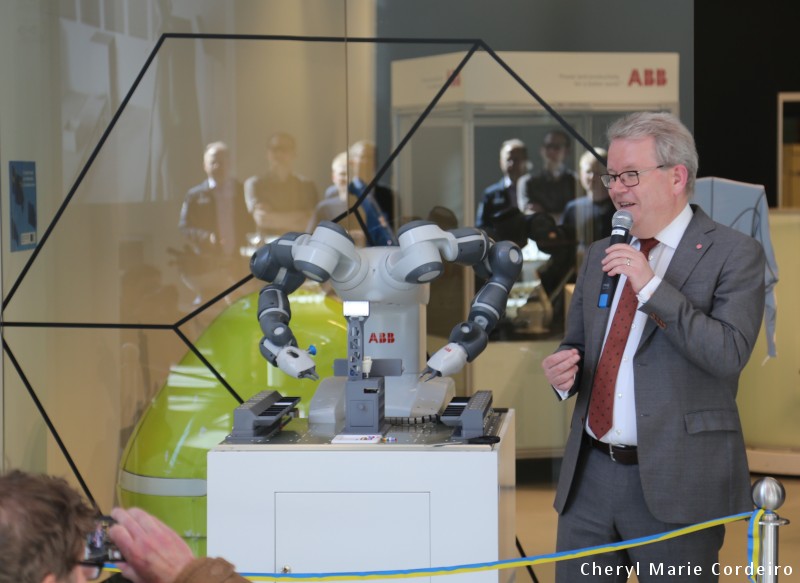Anders Teljebäck, Chairman of the Municipal Council, Västerås, Sweden, was guest of honour at the CRTC opening ceremony.
Text & Photo © JE Nilsson, CM Cordeiro 2017
The opening ceremony of the Collaborative Robot Test Center (CRTC) at Robotdalen, Expectrum, in Västerås, Sweden, took place on 4 May 2017. CRTC is located within the creative learning hub of Expectrum, Västerås city’s meeting place for technology entrepreneurs, thought leaders and innovators. In terms of providing pioneering robotics solutions, CRTC, a joint project between ABB, Robotdalen and Mälardalen högskolan, will offer pre-studies to SME automation processes in use of collaborative robot, YuMi (Bergman, 2017; Löfvenberg, 2017).
Urban landscapes increasingly leverage advancing technologies to co-create socio-economic infrastructures and processes (Wakeford, 2004). In that aspect, CRTC’s lab location and its evolution as a robotics solution unit now officially open, could be seen as marking in contribution towards a larger global movement in the democratising of technology.
Looking at this event from an international business (IB) theory perspective, the socio-economic history and foundations of a region are important for the future development of its urban spaces and functions (Sydow, Windeler, Müller-Seitz & Lange, 2012; Teece, Pisano & Shuen 1997; Antonelli, 1999).
Västerås city is Sweden’s sixth largest city with about 140,000 inhabitants. It is the founding place of the now Swedish-Swiss multinational enterprise (MNE) ABB. ABB is one of the world’s largest engineering companies and it is pioneering on many technological fronts. One of these is its automation process solutions and robotics. Its duo-armed collaborative robot – YuMi – was conceptualised in 2006 and launched in 2015. This product is now one in a range of robot process solutions offered by ABB Robotics (Tobe, 2015).
Naturally, a lot of the day’s event circulated around YuMi. This cost efficient, lightweight and flexibly deployed robot was designed specifically to work alongside humans in small parts assembly, in an effort towards relieving humans of the most tedious and repetitive manual tasks from assembly line industries. Its compact, tabletop design redefines not just the work space of the modern factory where no barriers are needed between robot and human, but also the manner in which manual labour is distributed in relation to human-machine productivity.
Not all YuMi acquisitions have however, been motivated by a wish to increase production capacity and rate of return of investment. Some reasons have been purely emotive-cognitive, ” – It’s so human, don’t you think? Well, I wanted two YuMis because it’s too adorable not to have in our own factory.” And when viewing (in video format) DJ YuMi in the latest Ford’s Fiesta 2016 release in Europe (Ford Europe, 2016), it’s difficult to disagree.
The city of Västerås is progressive. Many of its features – from the conception of new buildings, social spaces and healthcare – characterise Västerås as a ubiquitous city, or a U-City. A U-City is defined as one in which infrastructures, services and processes incorporate and perpetuate the advancement of technologies (Västerås Stad, 2017; Jonsson, 2017; Anttiroiko, 2013). A vast majority of region Västmanland’s education institutions, automation, digitization and innovative solutions are designed to constantly bolster socio-economic and community well being.
On a small but significant note, the public website of Västerås and all related public information websites are exemplars of functionality and ease of navigation. As one of the first introductions to the city of Västerås I experienced in 2015, I was tipped to download and use the Västerås Cityapp, that immediately navigated me to the cafés where I could source for a good cup of hot chocolate, and some chocolate cake.
Personally, I thought the city app was perfectly efficient at making a chocolate loving person like me feel at home, away from home.
If the U-City is to become a global vision towards diminishing socio-economic gaps between groups of people and regions, then a collaborative robot product-service system would be one among many social and industrial processes needed towards building a sustainable future.
As Principal Investigator in a project funded by the Riksbankens Jubileumsfond (RJ) Flexit 2015 programme (RJ, 2015), working together with ABB Corporate Research and the Centre for International Business Studies (CIBS), at the School of Business, Economics and Law at the University of Gothenburg, Sweden, it’s been an honour and pleasure for me to have been part of the welcoming inauguration ceremony of CRTC, a facet feature in the organization landscape of the U-City, Västerås, Sweden.
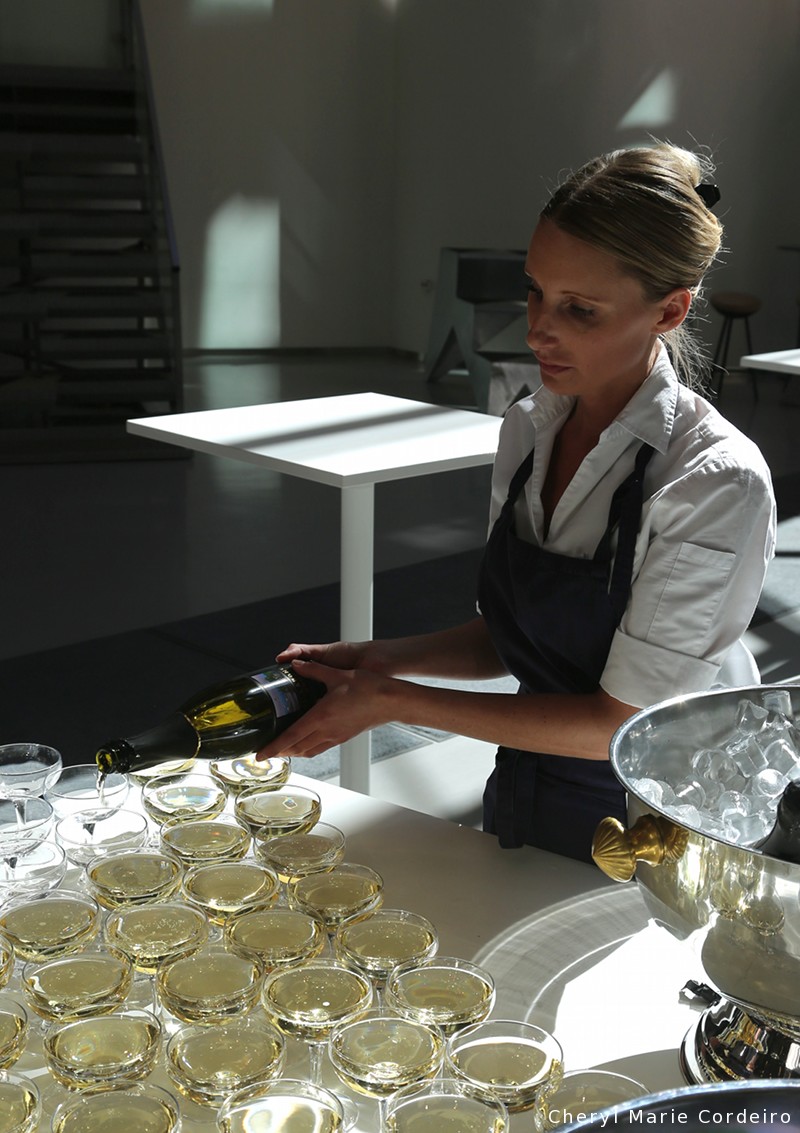

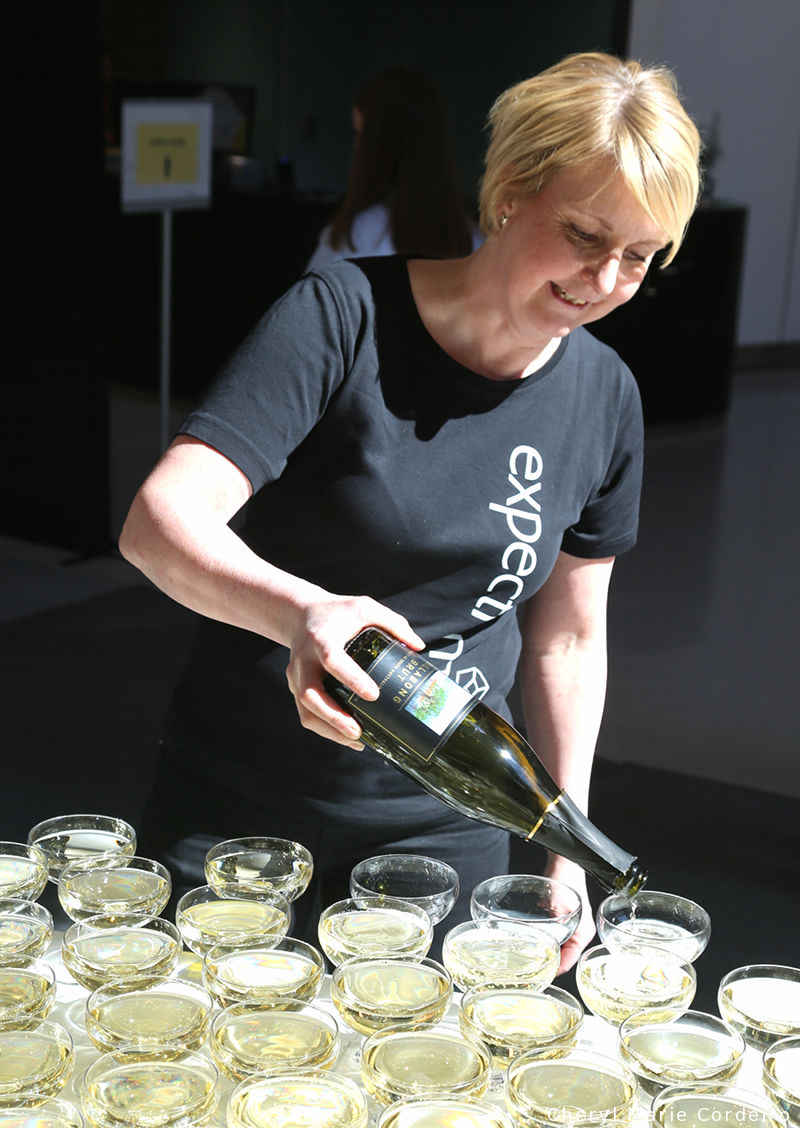
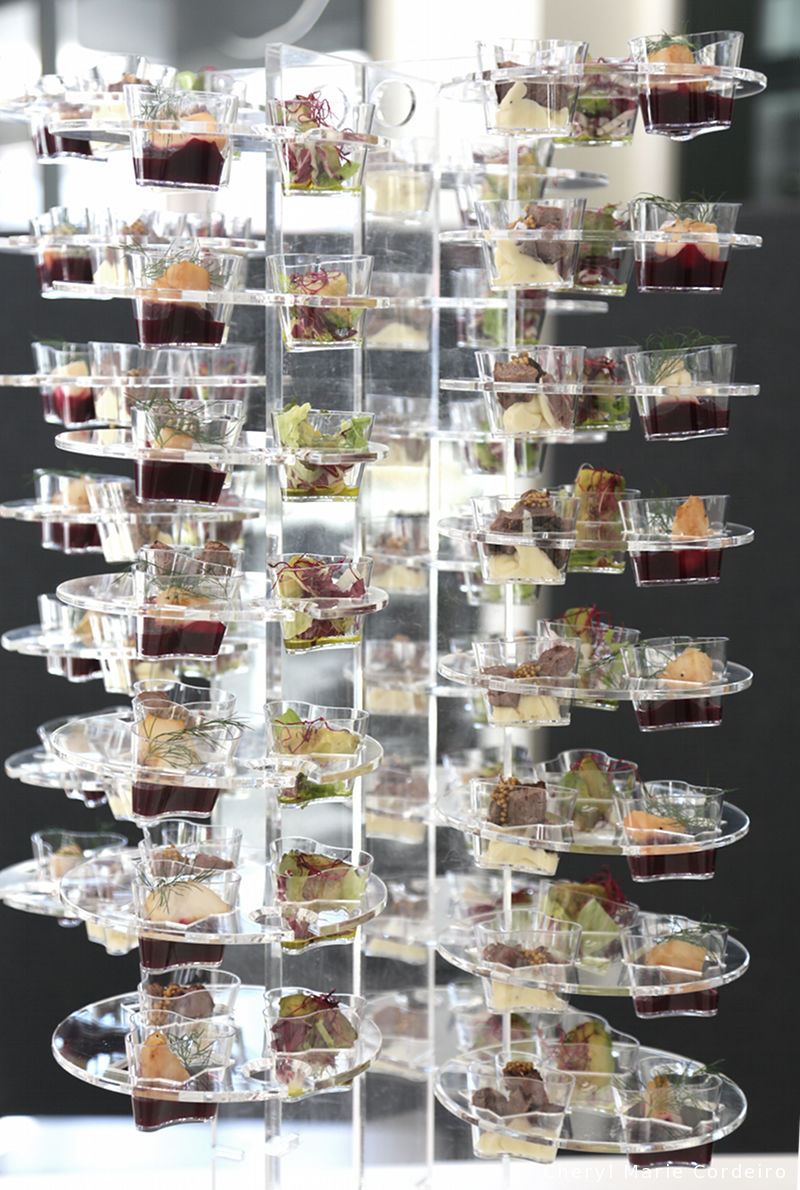
Hors d’oeuvres architecture.

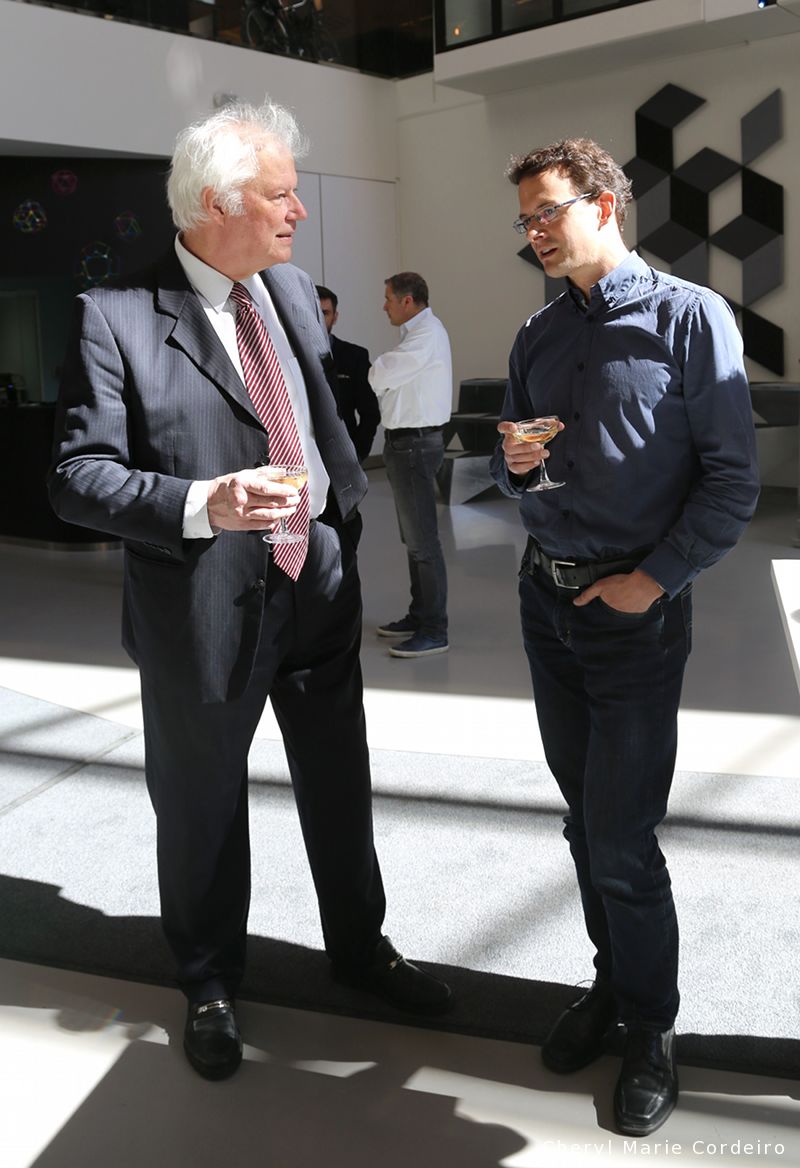
L-R: Jan-Erik Nilsson, co-founder of the Götheborg III Ship project (Sweden China B2B trade promotion), speaking with Daniel Sirkett, Principal Engineer (concept visualisation), YuMi, CRTC, Västerås, Sweden.
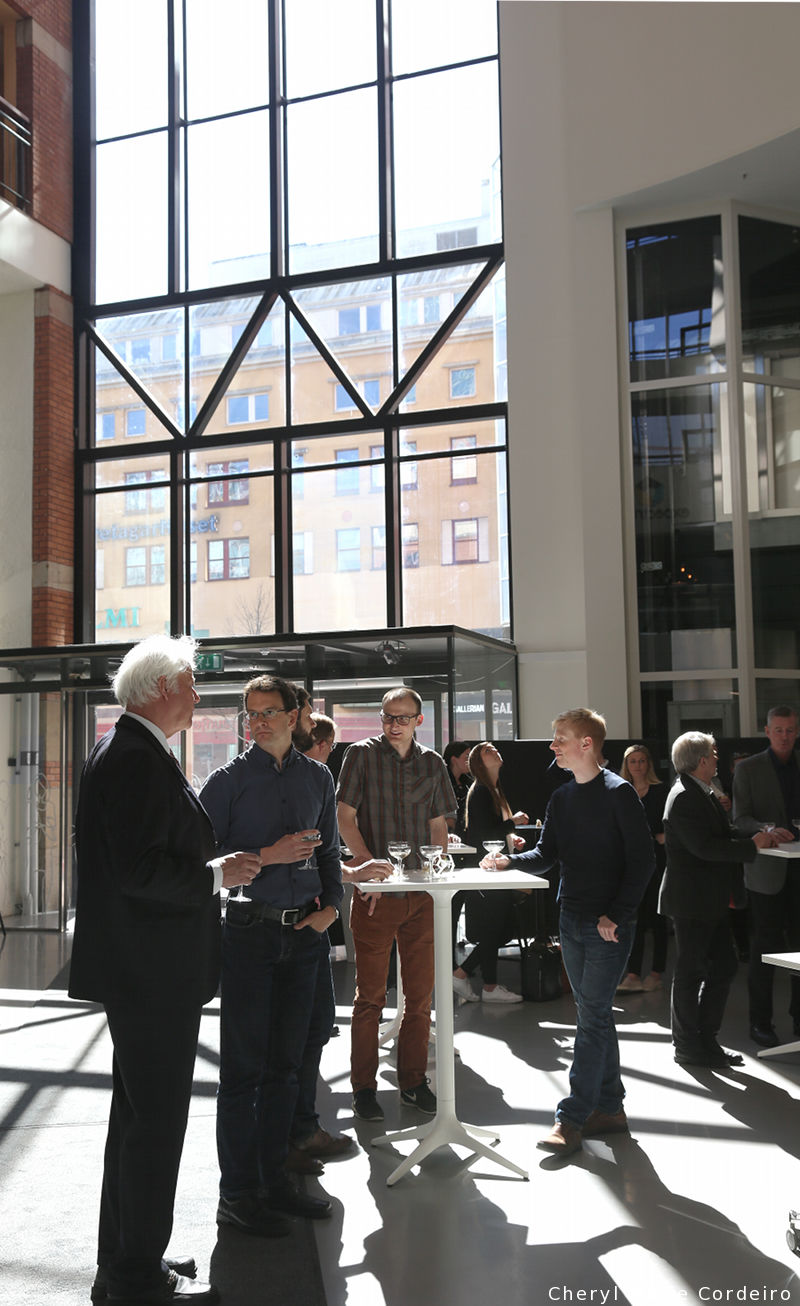
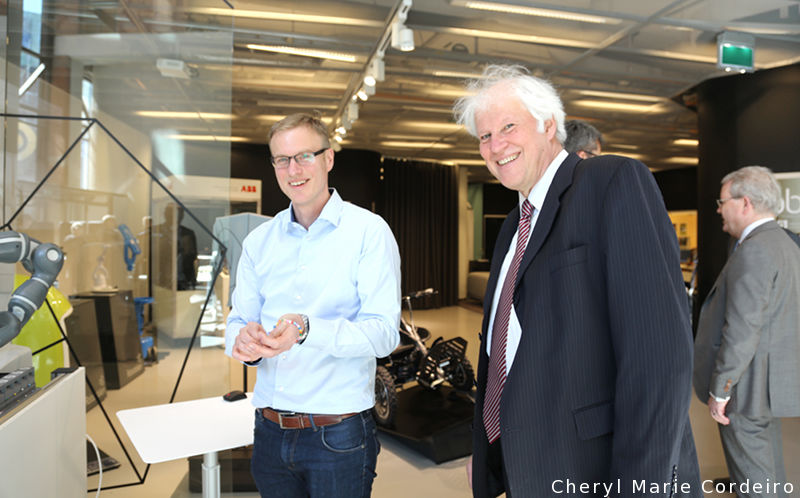
L-R: Ivan Lundberg, Project Leader, CRTC, Principal Engineer, YuMi, with Jan-Erik Nilsson, co-founder of the Götheborg III Ship project (Sweden China B2B trade promotion).
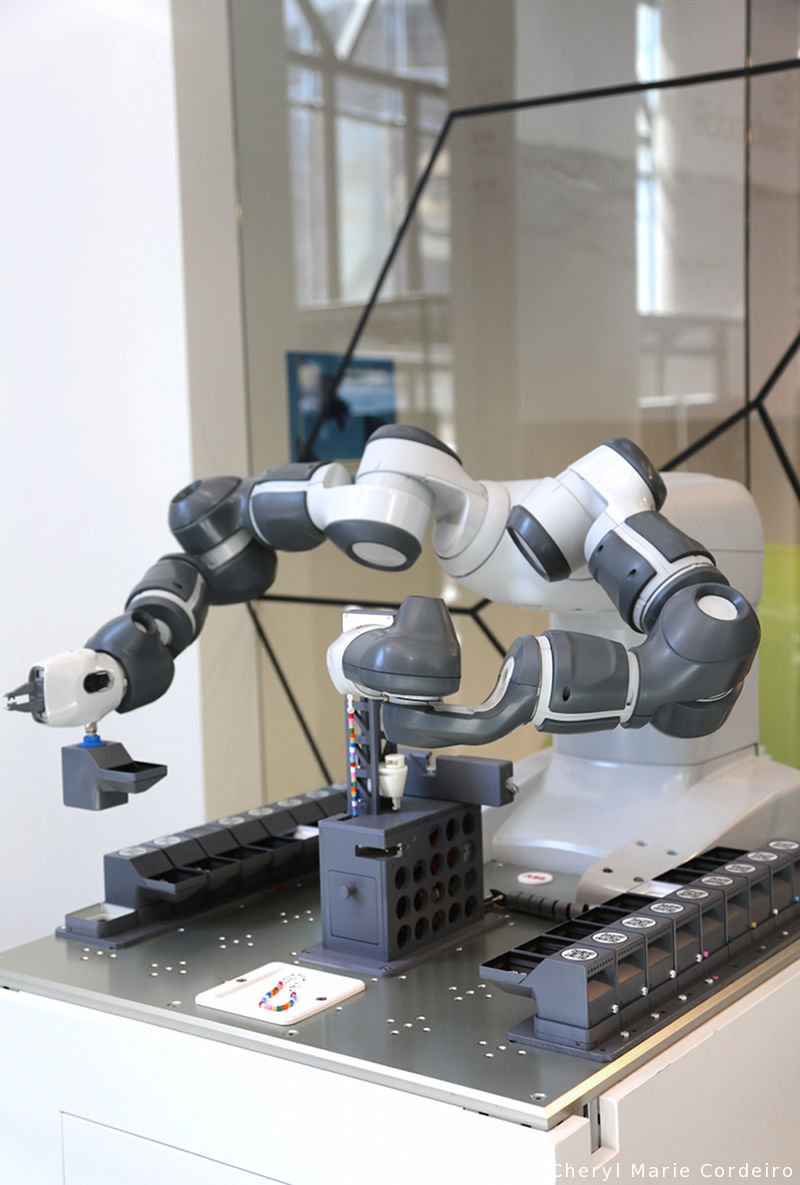
YuMi by ABB, is a duo-armed collaborative robot adept not just at small parts assembly, but at DJing (Ford Europe, 2016).
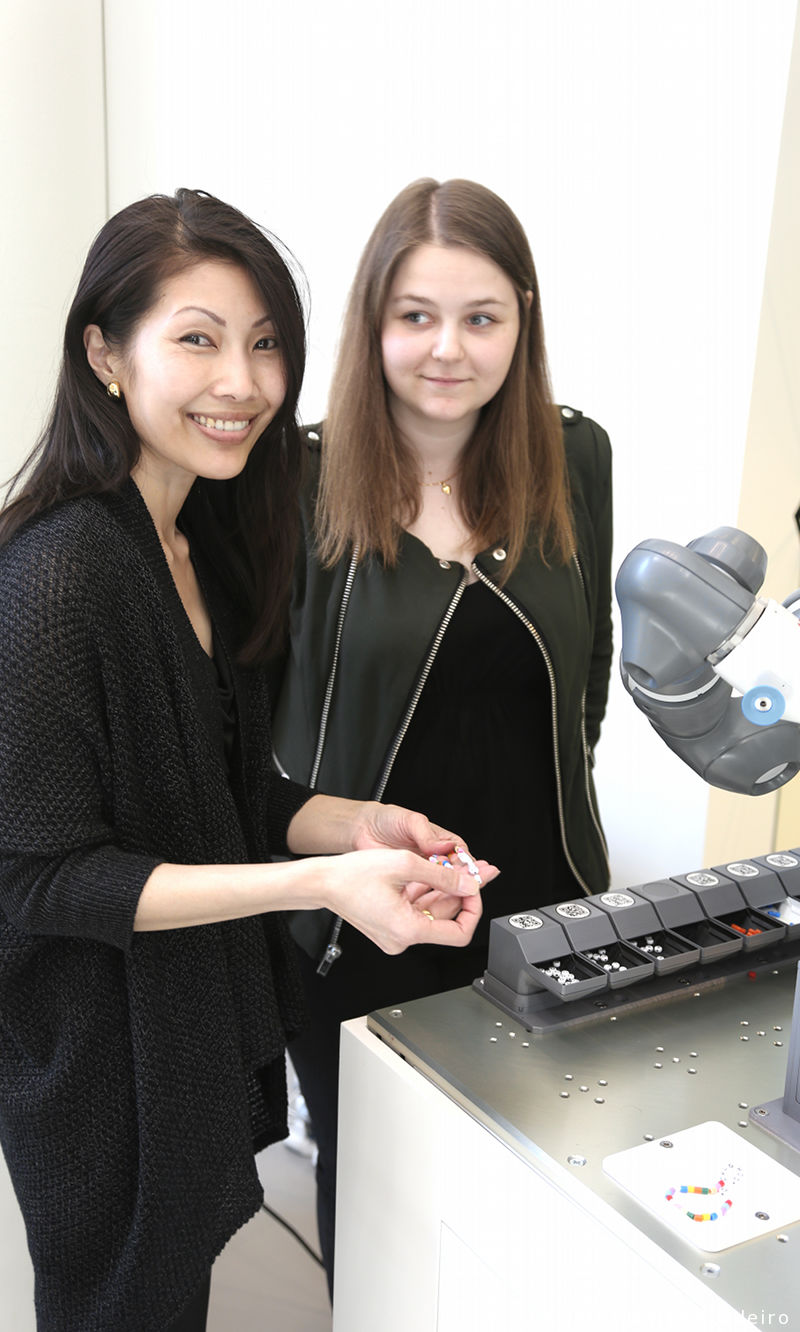
L-R: Cheryl Marie Cordeiro, with Sandra Collin. Sandra is currently one of the foremost YuMi programmers on the globe. On display is YuMi assembling the Childhood bracelet, for the World Childhood Foundation, founded by H.M. Queen Silvia of Sweden.

Plastic beads used by the YuMi robot to make the Childhood braclet.
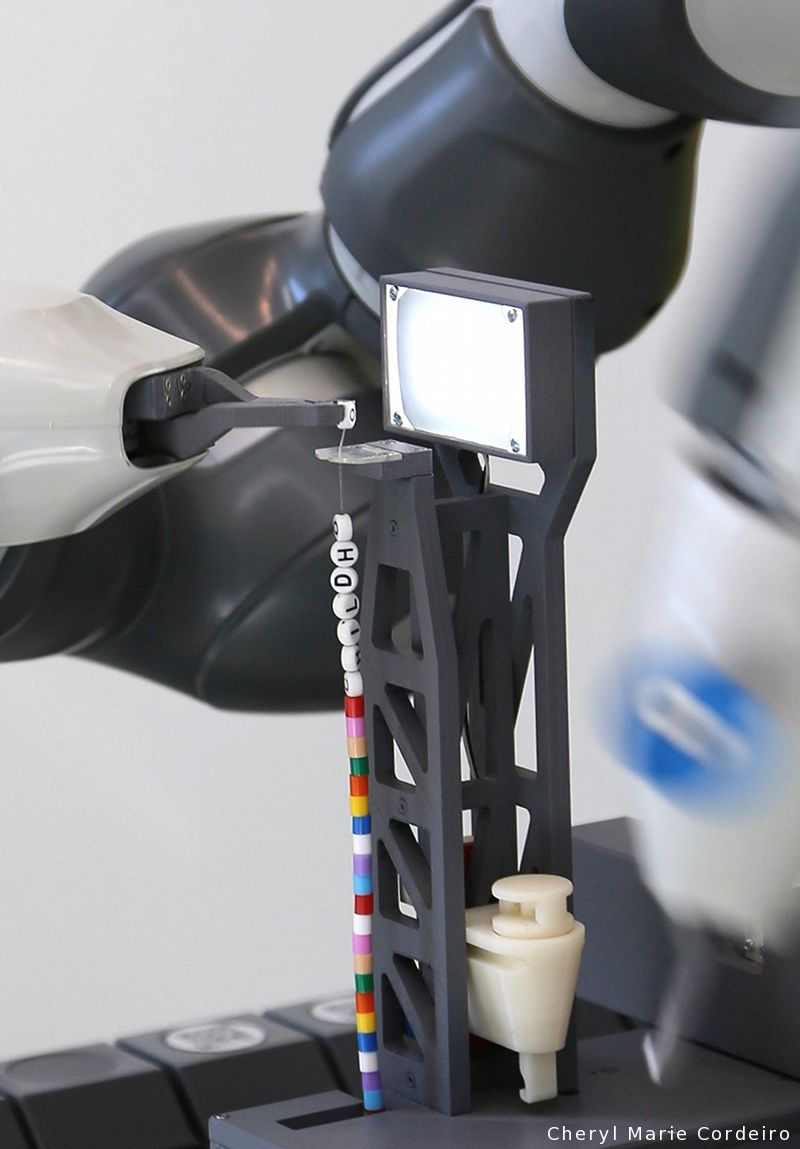
One of the challenges for this application is that the plastic string is a soft and flexible one, that can easily bend in any direction. Since the holes in the beads are only 0,5 mm wide, it takes a special approach to make the YuMi see this and adapt after the situation. This is a small but significant difference from old fashioned assembly machines that would need the thread to be exactly the same at all times.
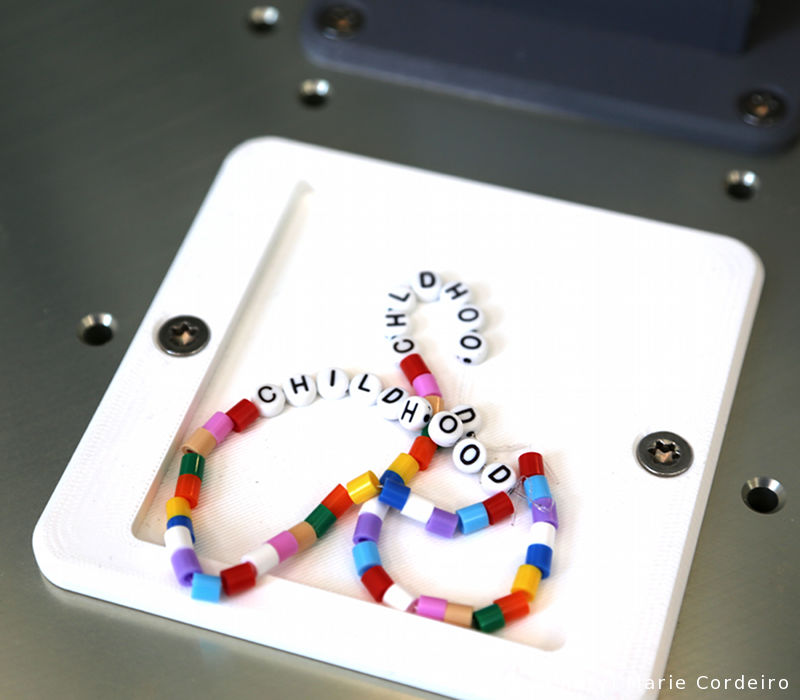
Childhood foundation bracelets, as put together by YuMi.
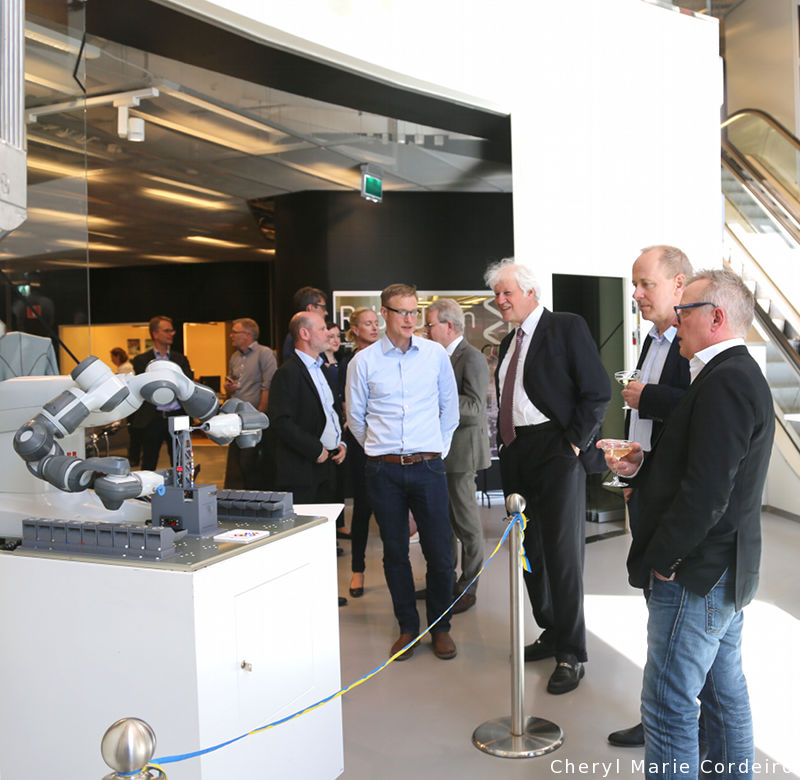
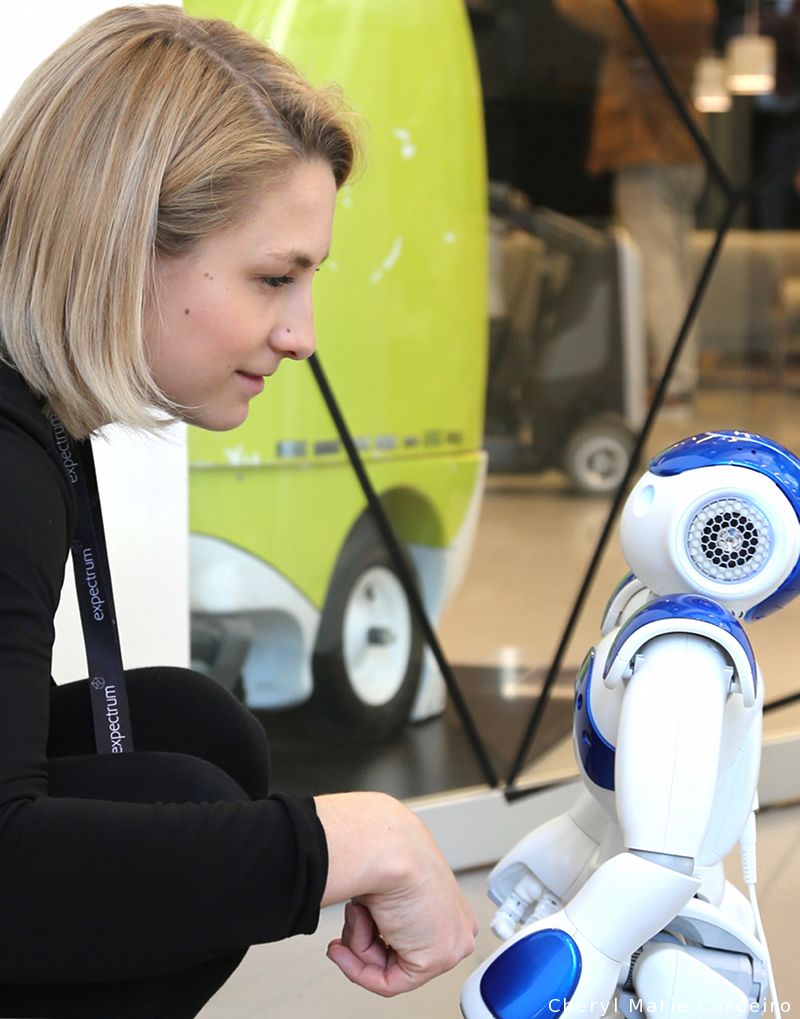
Meeting with NAO robot. This 58 cm interactive companion robot is part of the atmosphere of learning at innovation development meeting space, Expectrum in Västerås, Sweden. Launched by SoftBank Robotics in 2006 and in its fifth version, there are currently 10,000 NAO through the globe. This little one was both a feature and guest at the CRTC opening ceremony.
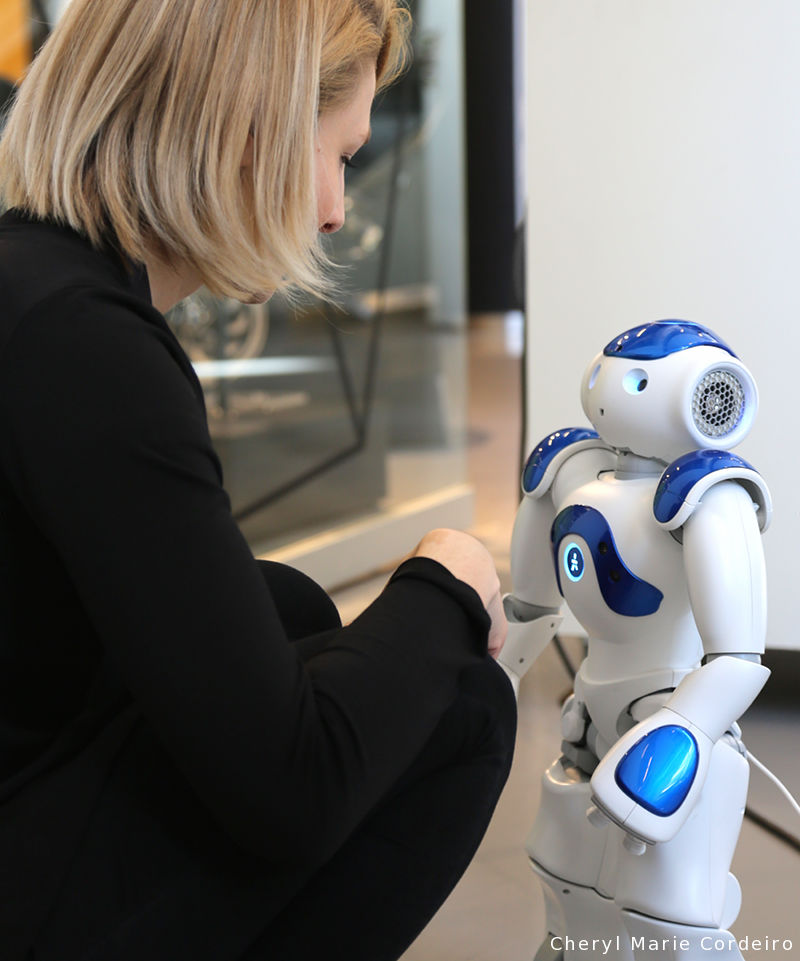
”Nice robot! Promise me NAO, no macarena!”
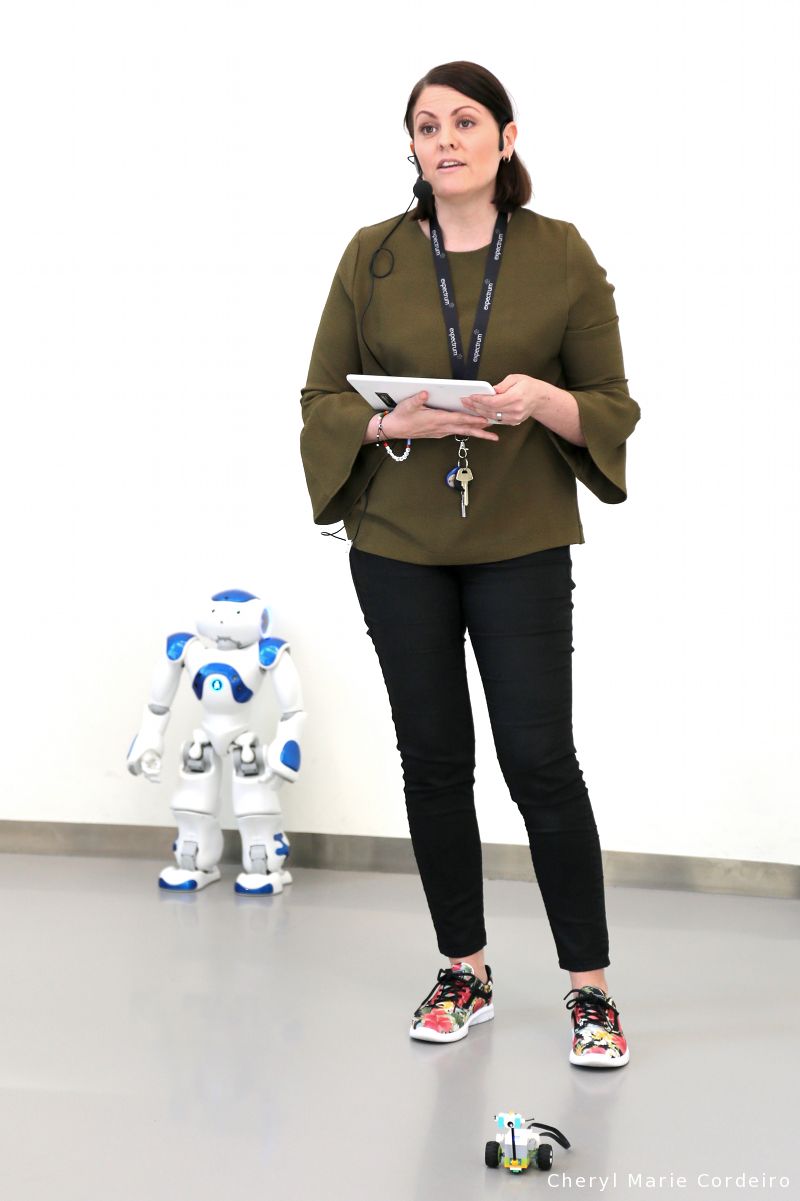
An introduction speech to Expectrum by Anna Sangve. Expectrum is an exciting innovations meeting hub for individuals interested in current and future innovations. Located at the heart of the city of Västerås near the city’s central train station, Expectrum provides an urban eco-space for learning and the exchange of ideas on new technologies and their applications.
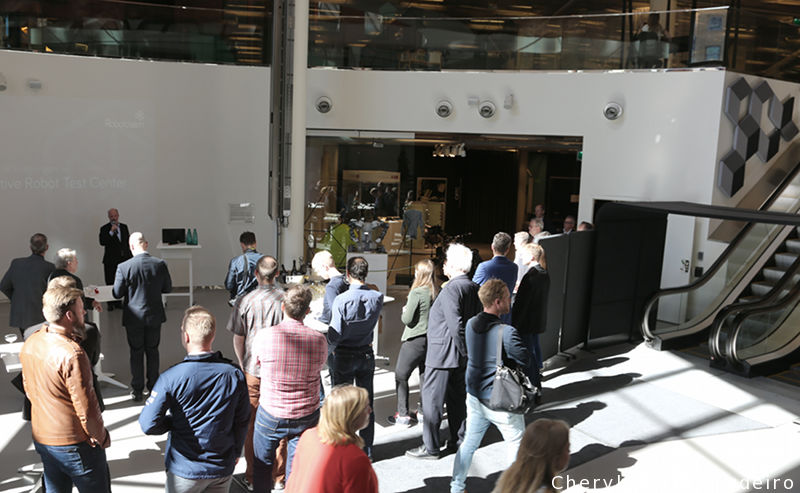
Foyer, Expectrum, Västerås, Sweden.
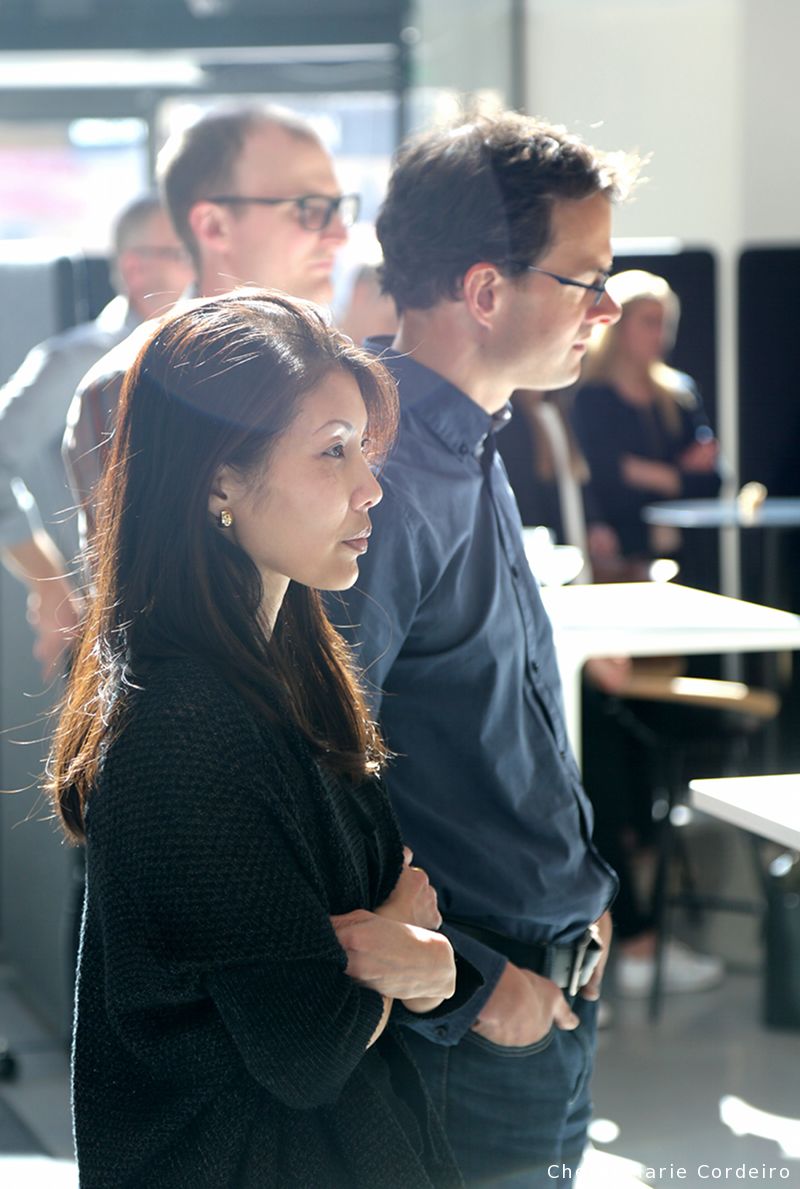

Erik Lundqvist, General Manager, Robotdalen, Västerås, Sweden.
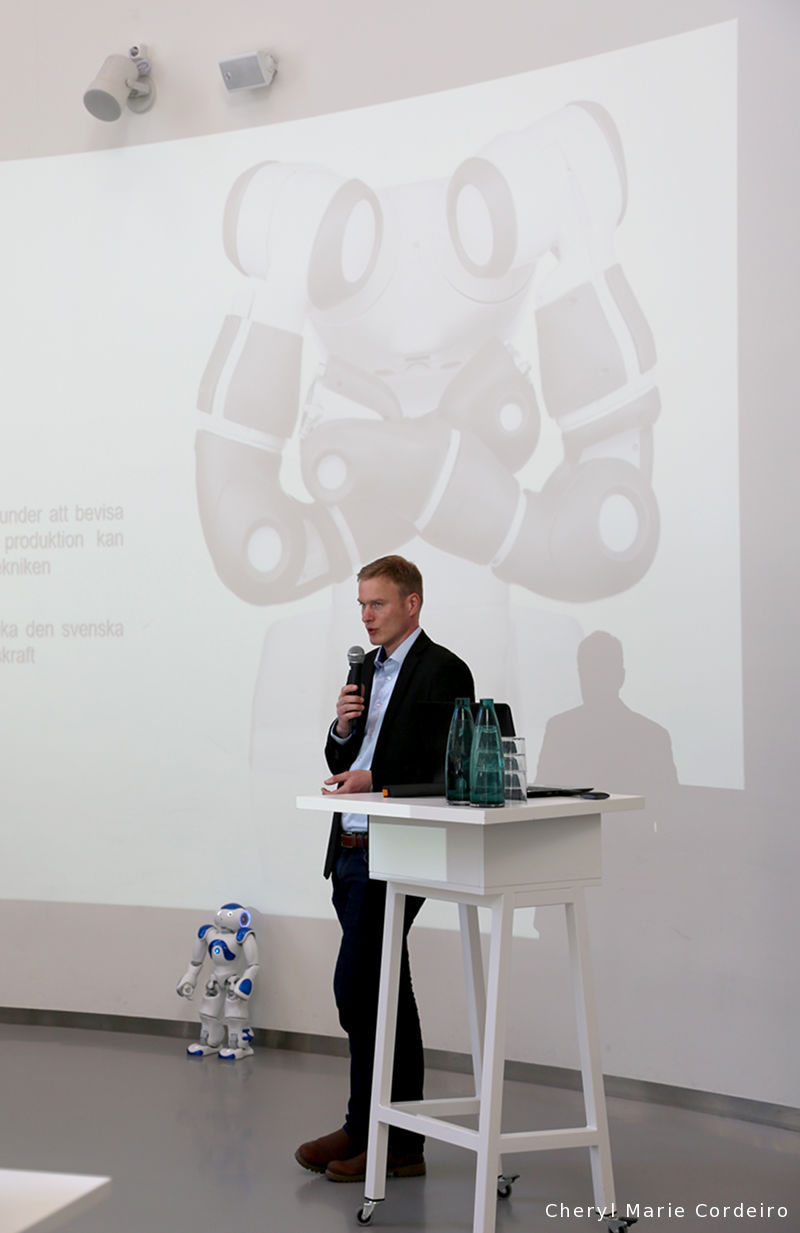
Ivan Lundberg, Project Leader, CRTC, Principal Engineer, YuMi, Västerås, Sweden.
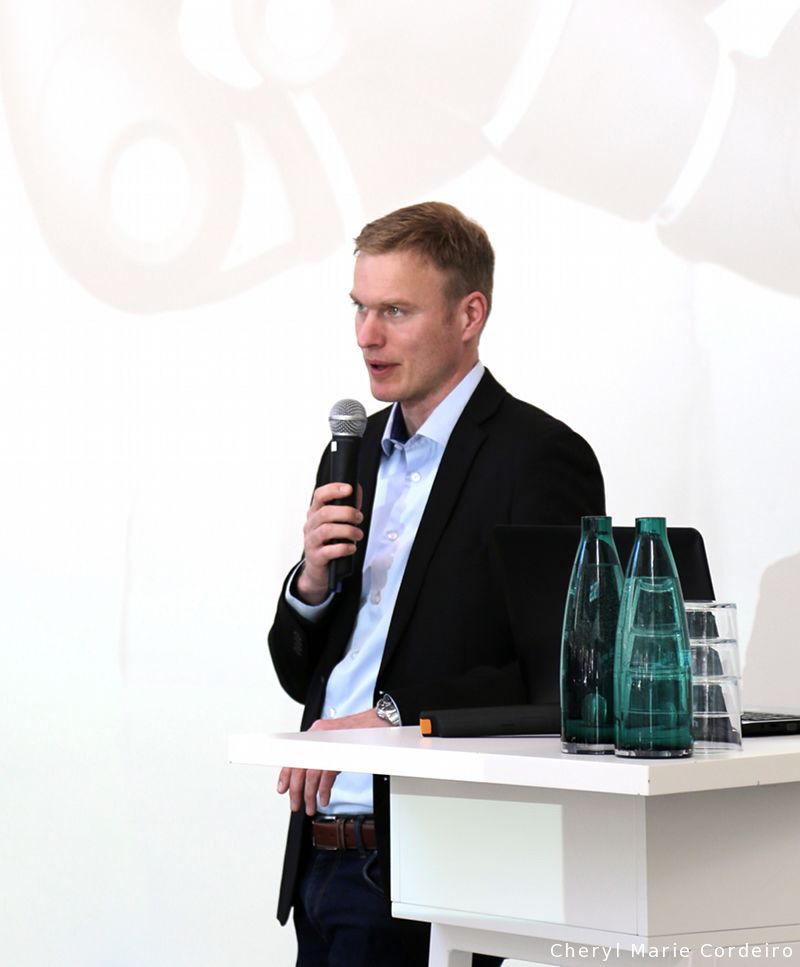
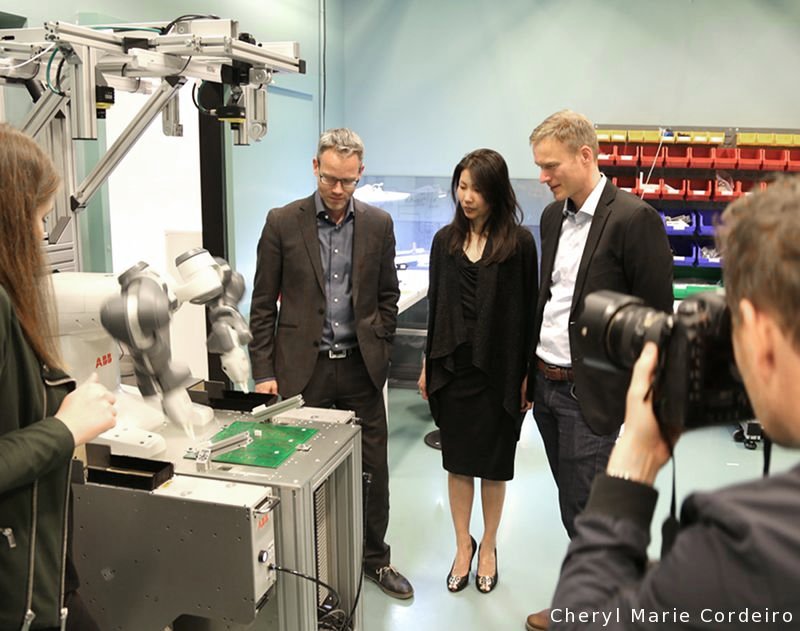
In the CRTC lab.
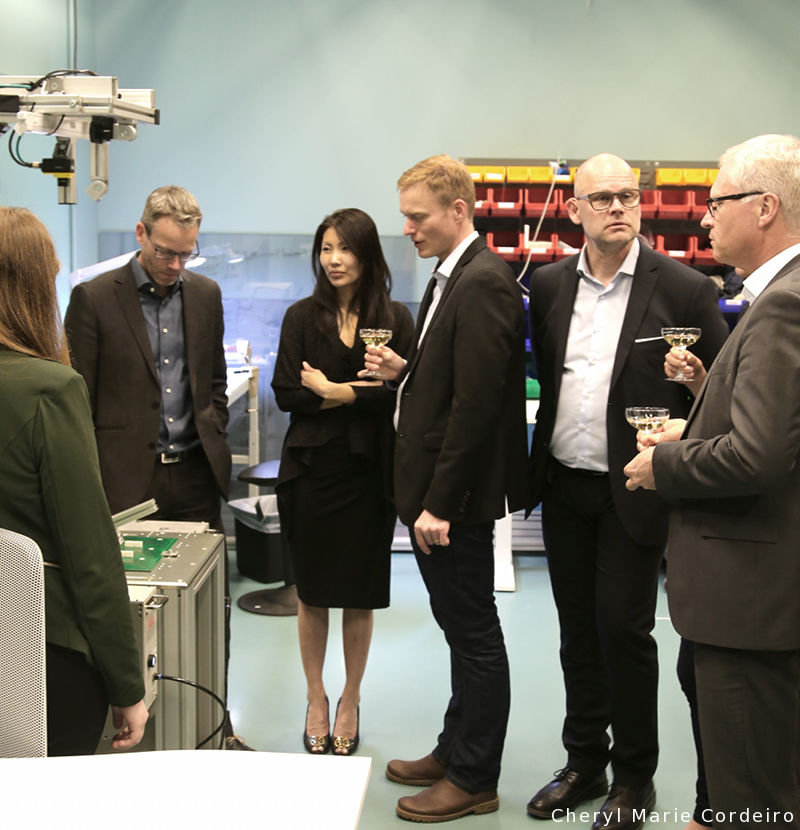
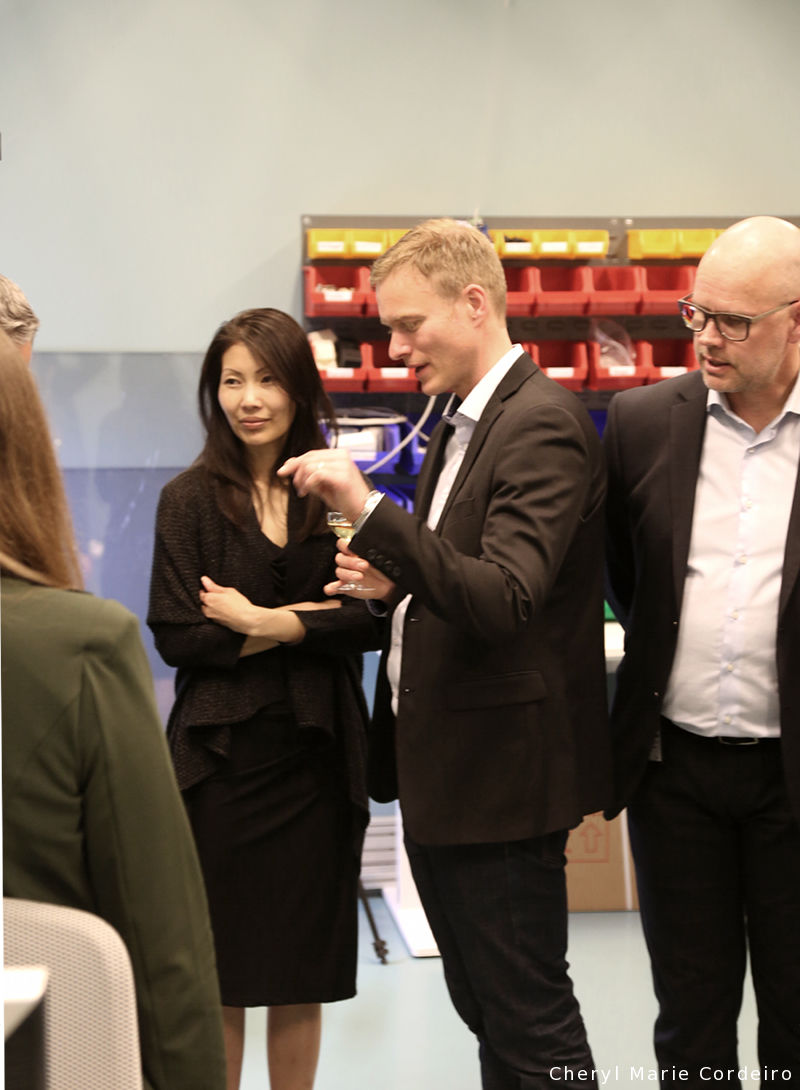
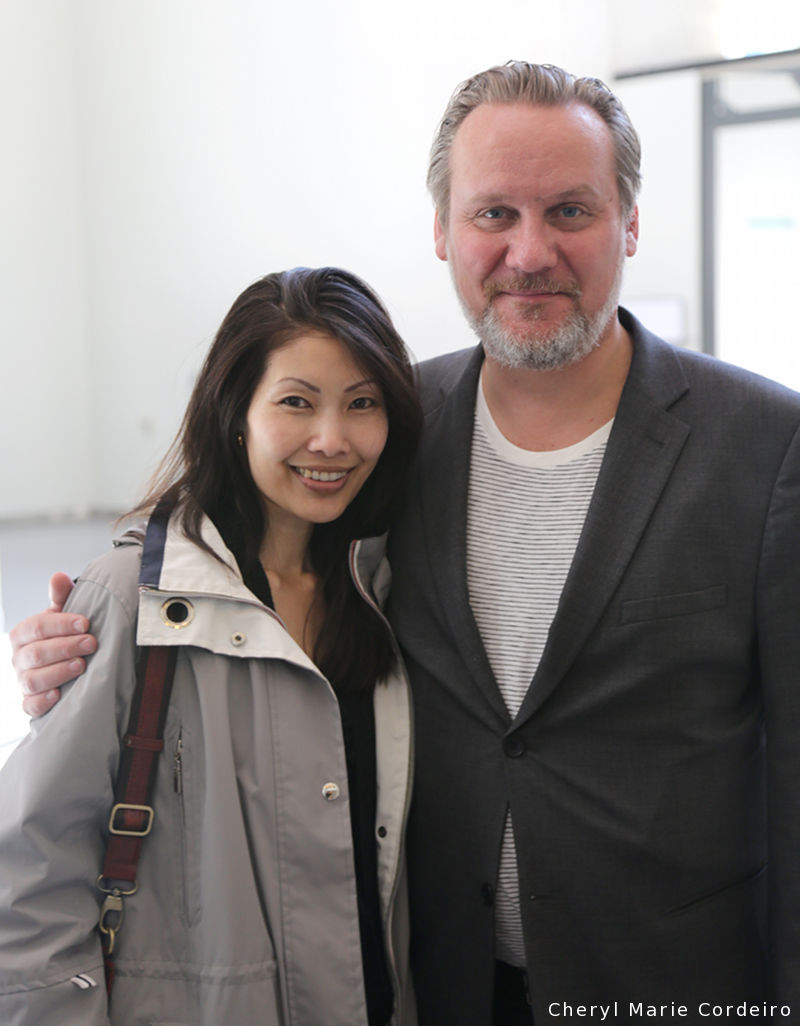
Cheryl Marie Cordeiro, with Klas Larsson, Head of Communications for Robotdalen, Västerås, Sweden.
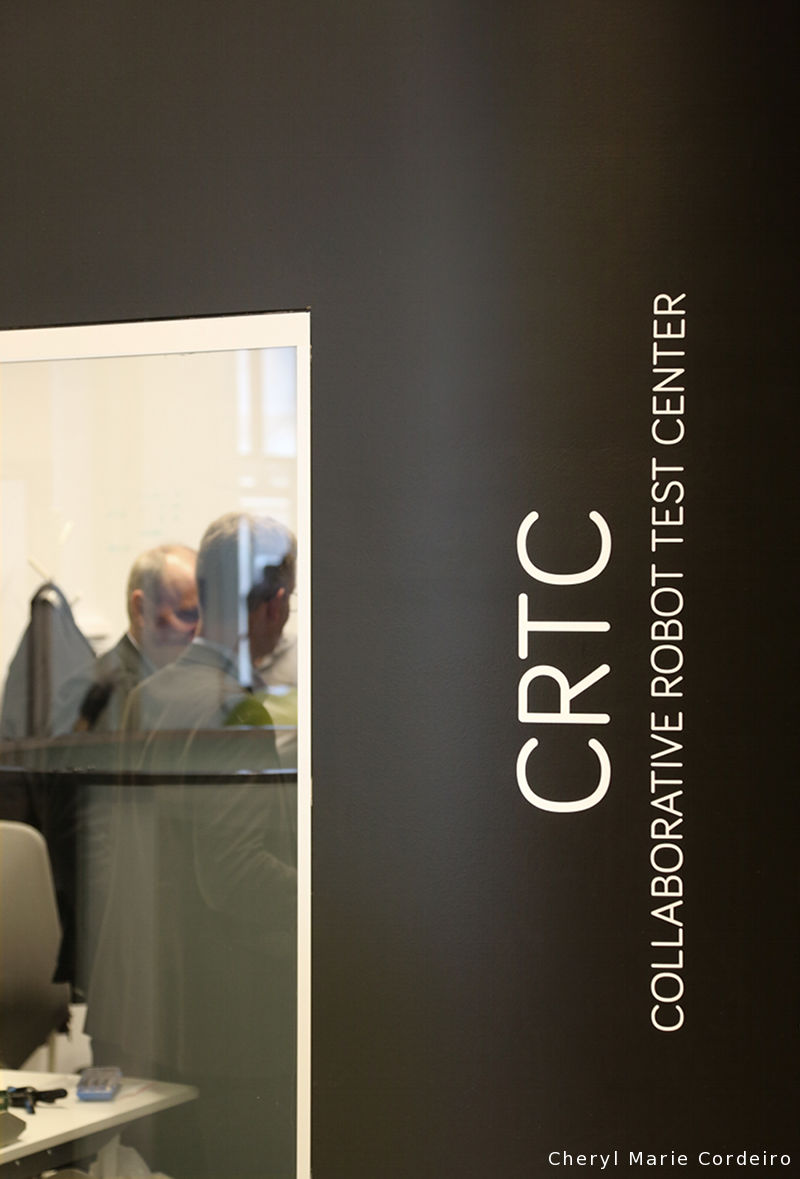
The Collaborative Robot Test Center (CRTC) Robotdalen in Västerås, Sweden, held its official opening ceremony on 4 May 2017.
References
Antonelli, C. (1999). The economics of path-dependence in industrial organization. International Journal of Industrial Organization, 15:643-675.
Anttiroiko, A-V. (2013). U-cities reshaping our future: Reflections on ubiquitous infrastructure as an enabler of smart urban development (Report). AI & Society, 28(4): 491-507.
Bergman, L. (2017). Nytt testcenter för robotar invigt, ABB AB. Internet resource at http://bit.ly/2ruv2lJ. Retrieved 18 May 2017.
Ford Europe (2016). Ford Robot hits the decks with DJ Yoda. Ford Europe, 30 Nov. 2016. Internet resource at https://youtu.be/Z77gIF6sq50. Retrieved 6 May 2017.
Jonsson, J.L. (2017). Västerås stad kammar hem nytt pris – kallas ”en föregångare”. Vestmanlands Läns Tidning, VLT, 25 Apr. 2017. Internet resource at http://bit.ly/2qCzS3x. Retrieved 6 May 2017.
Löfvenberg, J. (2017). Framtidens robotteknik finns i Västerås. Vestmanlands Läns Tidning, VLT TV, 4 May 2017. Internet resource at http://bit.ly/2qLc0YL. Retrieved 6 May 2017.
Riksbankens Jubileumsfond (2015). Flexit-forskarna, Riksbankens Jubileumsfond. Internet resource at http://bit.ly/2pReO8G. Retrieved 6 May 2017.
Sydow, J., Windeler, A., Müller-Seitz, G., & Lange, K. (2012). Path constitution analysis: A methodology for understanding path dependence and path creation. Business Research, 5(2): 155-176.
Teece, D.J., Pisano, G. & Shuen, A. (1997). Dynamic capabilities and strategic management. Strategic Management Journal, 18: 509-533.
Tobe, F. (2015). ABB launches YuMi and acquires gomTec. The Robot Report, 14 Apr. 2015. Internet resource at http://bit.ly/2pfVCh5. Retrieved 6 May 2017.
Västerås Stad (2017). Västerås är Sveriges eHälsokommun 2017. Västerås Stad, 25 Apr. 2017. Internet resource at http://bit.ly/2p6CNSj. Retrieved 6 May 2017.
Wakeford, T. (2004). Democratising technology: Reclaiming science for sustainable development. Rugby: ITDG.
